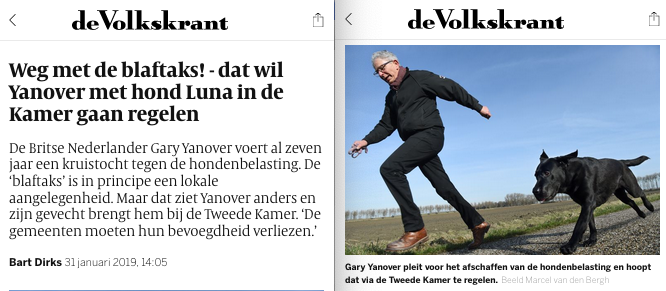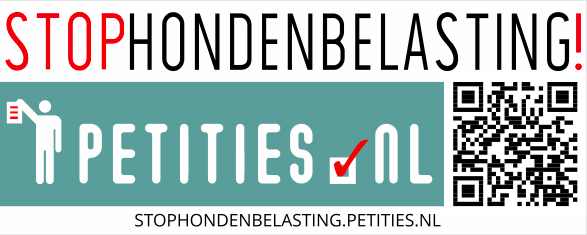Nieuws
A Ticket System for Government (Or: Let’s Finally Give the Ombudsman Teeth)
The ombudsman, as it stands, is a shark without teeth. It cannot even smell a scandal if it was bleeding before their eyes — can’t sense, can’t bite, can’t act, can’t fix. It’s a watchdog with no jaws. So let’s give it an upgrade or even better give the government such an upgrade that Ombudsman loses the necessity for their entire existence.
This isn’t some grand ideological revolution. It’s just a silly idea for a public ticket system. Silly, but powerful.
Imagine a civic ticket system — not buried in obscure forms, not locked in back-office email chains. Just like an internal help-desk, but for governance. Public, structured, traceable. And smart.
This is what it looks like.
Core Idea
Citizens should be able to report issues publicly — not buried in anonymous inboxes, not hidden behind “ongoing investigation” seals. People already talk about public issues. If people can talk about public issues with their friends, why can’t they track them together too?
A government ticket system could work just like internal systems in IT or customer service — but with a civic twist.
This is not a place for endless debate. It’s a structure to frame problem → proposal → response, cleanly and traceable.
This system proposes a transparent, iterative problem-solving interface where AI is used not to obscure, but to clarify.
The System: Public, AI-Structured, and Transparent
The system is made up of 4 stages — and yes, it uses AI — but only as a tool to help people sharpen what they’re already saying.
Every issue goes through this cycle:
1. Problem Description
a) Citizens submit an issue.
b) The AI cleans up the language, consolidates overlapping inputs, and upgrades the coherence of the report.
c) A public change-log shows the input that evolved the description — all steps visible, all input attributable.
2. Proposed Solution
a) Based on the refined problem description, the AI drafts a solution or possible action path.
b) This is visible to the public as a formal response — no magic, just structured reasoning.
c) This is not a decision. It’s a draft — structured logic, not authority. Only advice.
3. Critique Layer
a) Citizens respond to the proposed solution — a structured challenge to the proposal..
b) Their remarks are also structured by AI — not censored, but upgraded for clarity and grouped by theme or angle.
c) Again, change-logs and input trails are visible. No anonymous edits. No hidden manipulations.
d) in a sense this is the same as step 1 (problem description)
4. Upgraded Solution
a) The AI integrates valid critiques and proposes a refined version of the solution.
b) This is the “feedback-reinforced” stage, where the system attempts synthesis, not endless argument loops.
All stages remain visible — including abandoned tickets, failed resolutions, and ongoing ones. This creates a living public record of issues and proposed governance responses.
This is the synthesis. 1 = 2 + 3 = 4.
Why This Matters
- It forces clarity and traceability. No more vague complaints floating in chaos.
- It turns public input into a collaborative upgrade process.
- It shows which tickets are being handled, stalled, ignored — in plain sight.
- It makes every AI edit accountable, not mysterious.
- It doesn’t replace the ombudsman — it arms them.
Business Model? Sure — But Keep It Public
Yes, this is a product. But no, it shouldn’t be commercialized. This is civic infrastructure. It belongs to the commons.
It could be sold to municipalities, NGOs, or transparency coalitions — but that defeats the purpose.
Build it, release it, and let it run at zero cost. The public has already paid for enough systems that don’t work. This one should.
The value lies not in monetization — but in legitimacy.
Expanded Use: From Complaint Board to Administrative Operating System
What starts as a feedback tool can evolve into a complete civic engine. The system can scale:
- Reported Issue
- Processed Issue (by a public servant or automated filter)
- AI-generated remark on process adequacy (4-stages again)
- Re-open option if resolution was insufficient (4-stages again)
- Cross-department visibility and workflow mapping
- The ticket can go through different departments and the work of each department remains visible.
Each issue flows like a case file, but it’s public-facing and structurally transparent. Departments can adopt the system internally. Citizens and officials see the same state of the case. Updates are traceable.
With enough refinement, this system could even approach pre-judicial arbitration or replace lower-level administrative courts — especially for predictable, repeatable types of disputes (benefits, housing, permit denials, etc.).
At some point a judge and lawyer can then bend over the case after it went through these 3 steps.
Design Philosophy
- Public by default.
- AI-enhanced, not AI-obscured.
- Built around iteration, not resolution-hiding.
- Input is traceable. Reasoning is legible. Logic is public.
- Not built to silence citizens with forms — but to cohere chaos into clarity.
Potential Impact:
If deployed at scale, this would:
- Reduce performative complaint culture (“I ranted online!”) in favor of traceable input.
- Provide oversight journalists and watchdogs with live case data.
- Offer civil servants a way to separate noise from signal.
- Create longitudinal accountability: we’d know what failed, what improved, and why.
- We can track government efficiency through details such as backlog and amount of re-opened cases
Final Thought
Let’s stop treating public concern like noise.
Let’s give it a ticket.
Let’s give the ombudsman jaws.
Give people a way to speak clearly. Let the problems stay visible. Let the fixes be criticized. Let the system evolve in full view.
Democracy doesn’t die in darkness — it suffocates in forms. We’ve normalized arbitrary bureaucracy and opaque complaint systems. But the technology to upgrade them exists. All we’re missing is the will — and the will can be crowd-sourced.
Written by Artorius Magnus
https://tinyurl.com/laconic-utopia World-Peace suggestions @250 articles highschool dropout-autodidact (unofficially 5+ PhD's).
**De voorlichtingsavond over de UFlex belbus**
Het is veel te lang stil geweest over het streekvervoer in Schalkwijk, 'Tull en 't Waal en 't Goy. Er was geen nieuws want naar nu blijkt is men bij de provincie en het U-Ov druk geweest om het concept UFlex verder te stroomlijnen.
Kennelijk waren er toch nog wat oneffenheden in het ontwerp. Zo werkte de App kennelijk nog niet. Wel vrij essentieel als je daar je bus mee moet boeken, toch... Nu komt er dan toch de beloofde voorlichting. Eén avond in de Ploeg in 't Goy en één in Schalkwijk. In 't Goy is deze avond al aanstaande donderdag in DE PLOEG. Dinsdag de 12e februari is het dan aan de Schalkwijkers om zich "mee te laten nemen" bij het nieuwe Openbaar Vervoer voor het Eiland van Schalkwijk. Volgens mij is het nog steeds een slecht concept, vooral omdat er niet bekend is wanneer er sprake is van een succes van deze proef. Dat wordt dus een proef waar je achteraf altijd kan zeggen dat het aan de verwachtingen voldoet. En dan kun je dus altijd volhouden dat het beter is dan regulier OV. Verder vind ik het nog steeds raar dat als je de leefbaarheid van de kleine kernen wil vergroten dat je dan het openbaar vervoer afbreekt en een belbus in gaat zetten. De gemeente Woerden wees een belbus systeem in november van het afgelopen jaar nog af als serieuze vorm van OV..... Waar gaat Houten dan aan beginnen.
Motie Amersfoort2014 en CDA verworpen door coalitiepartijen Amersfoort
Op initiatief van Amersfoort2014 is er een motie op 29 januari 2019 in de raad ingebracht die pleit voor betrokkenheid van bewoners bij de plannen voor zonnevelden. De coalitiepartijen D66, VVD, GroenLinks en Christenunie verwezen deze motie naar de prullenbak.
De motie verzocht het college voor de inpassing van de zonnevelden in Over de Laak een zelfde participatieproces te hanteren als bij de Ontwikkelingsvisie Over de Laak.
Tevens werd het college verzocht bewoners zo vroeg mogelijk te betrekken bij de visie en totstandkoming van de plannen in dit gebied. Helaas gingen de coalitiepartijen hier niet in mee. Een daarmee worden de bewoners van Vathorst dus weer op achterstand gezet. Net als vorig jaar. De gemeente Amersfoort heeft dus helemaal niets geleerd van de weerstand die zonnevelden oproept. Een gemiste kans.
Verklaring van geen bedenkingen
De gemeente Diemen is unaniem tegen de komst van de biomassacentrale en deelt de zorgen uit de petitie. Ze hebben helaas geen juridische grond om de verklaring van geen bedenkingen niet af te kunnen geven.
Daarom zal de petitie naar Provinciale Staten gaan en vragen we daar en aan de gemeente Diemen en de Tweede Kamer om de komst van de biomassacentrale tegen te houden
Artikel in de krant, raamstickers, eind maart duidelijkheid
ARTIKEL IN DE KRANT
De petitie tegen de hondenbelasting heeft ruim de aandacht gekregen in de Volkskrant! Sinds donderdag online en later in de papieren krant. 
RAAMSTICKERS TE KOOP
Er zijn nu ook raamstickers waarmee u de laatste ondertekenaars kunt werven! Als u uw auto langs de straat parkeert dan kunt u met de sticker achter de achterruit reclame maken voor de petitie! Maar ook als u een raam aan de straatkant heeft waar baasjes met hun hond langslopen kunt u zo meehelpen.
Of misschien wil uw favoriete dierenspeciaalzaak er één opplakken? 
De stickers hebben een zogenaamde QR-code die de petitiepagina oproept als iemand de camera erop richt (soms is er een extra app nodig). Steeds meer mensen worden er handig in en herkennen het. Maar het adres van de petitie staat er ook gewoon op. Die kunnen achterliggers in een file makkelijk onthouden.
Het zijn speciale stickers die makkelijk en zonder sporen te verwijderen zijn als de actie voorbij is. €4,50 voor een envelop met 2 stickers of voor €6,50 gelijk 5 stickers. Let erop dat u ze alleen op uw eigen bezit plakt, want mensen kunnen heel boos worden over vandalisme. Dat is niet goed voor de actie en formeel ook strafbaar. 123sticker.nl/stophondenbelasting is het adres om over te tikken als u niet meer op onbekende links in e-mail klikt. Zoeken op 'hond' in die webshop werkt ook.
EIND MAART DUIDELIJKHEID!
Een commissie van de Tweede Kamer vergadert op 28 maart over het overhandigen. Zo snel mogelijk na een akkoord volgt de overhandiging. Controleert u uw eigen ondertekening ook nog even op uw persoonlijke pagina? Naam, adres en geboortedatum? Als u ermee wachtte, nu is het tijd om al uw gegevens in te vullen. Na het overhandigen (of bij een afwijzing) worden uw gegevens weer gewist.Op dezelfde persoonlijke pagina kunt u helemaal onderaan ook het e-mailadres van iemand invullen die vast ook wil ondertekenen. Daar gaat dan een standaarduitnodiging namens u naartoe. Liefst willen we ruim over de 40.000 geldige ondertekeningen hebben, voor de zekerheid.
Dank voor uw steun!
Gary Yanover
Omroep Brabant: Gesjoemel met toewijzen van sociale huurwoningen
OOSTERHOUT - Een medewerker van de Oosterhoutse woningcorporatie Thuisvester is door zijn werkgever op non-actief gezet. De medewerker zou hebben gesjoemeld met de inschrijfdatum van potentiële huurders, waardoor deze (...) lees verder.
Landelijke petitie
Geregeld komt de vraag naar een landelijke petitie. Graag verwijzen wij dan naar: stophondenbelasting.petities.nl
Deze petitie is gestart uit ervaring dat je bij de overheid klein moet beginnen..
Boven de 1000 ondertekenaars
Als deze petitie meer dan 1000 ondertekenaars heeft zal er een campagne website opgezet worden.
Petitie verlengd
Deze petitie is verlengd tot 5 mei 2019, omdat dan partijen van de gemeentes hun begroting voor 2020 op papier gaan zetten..